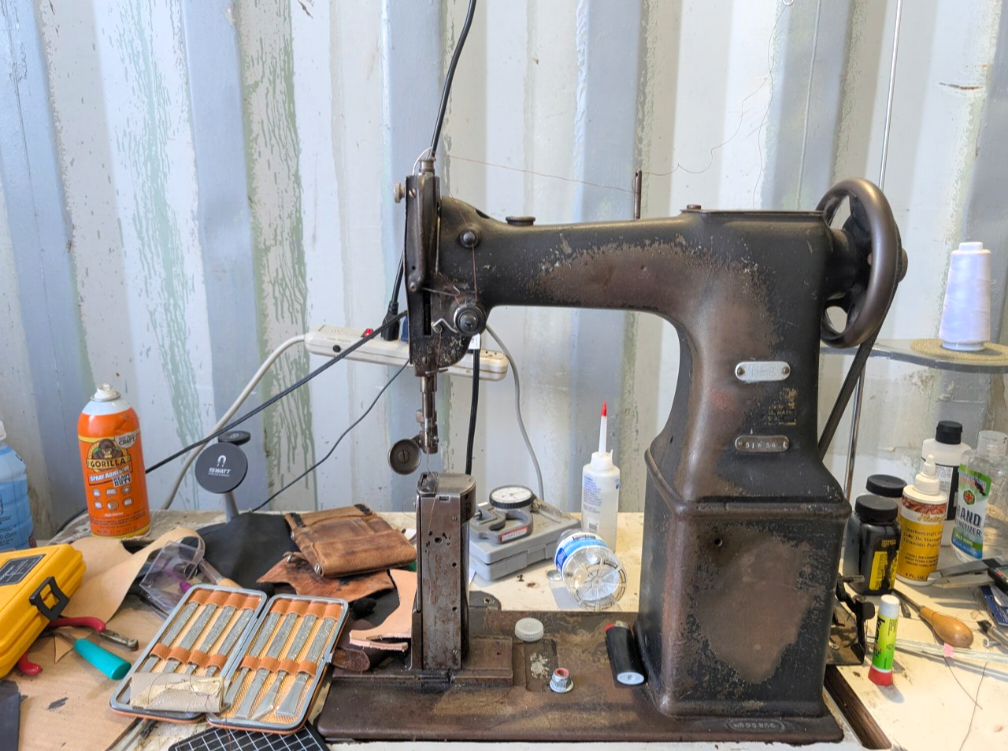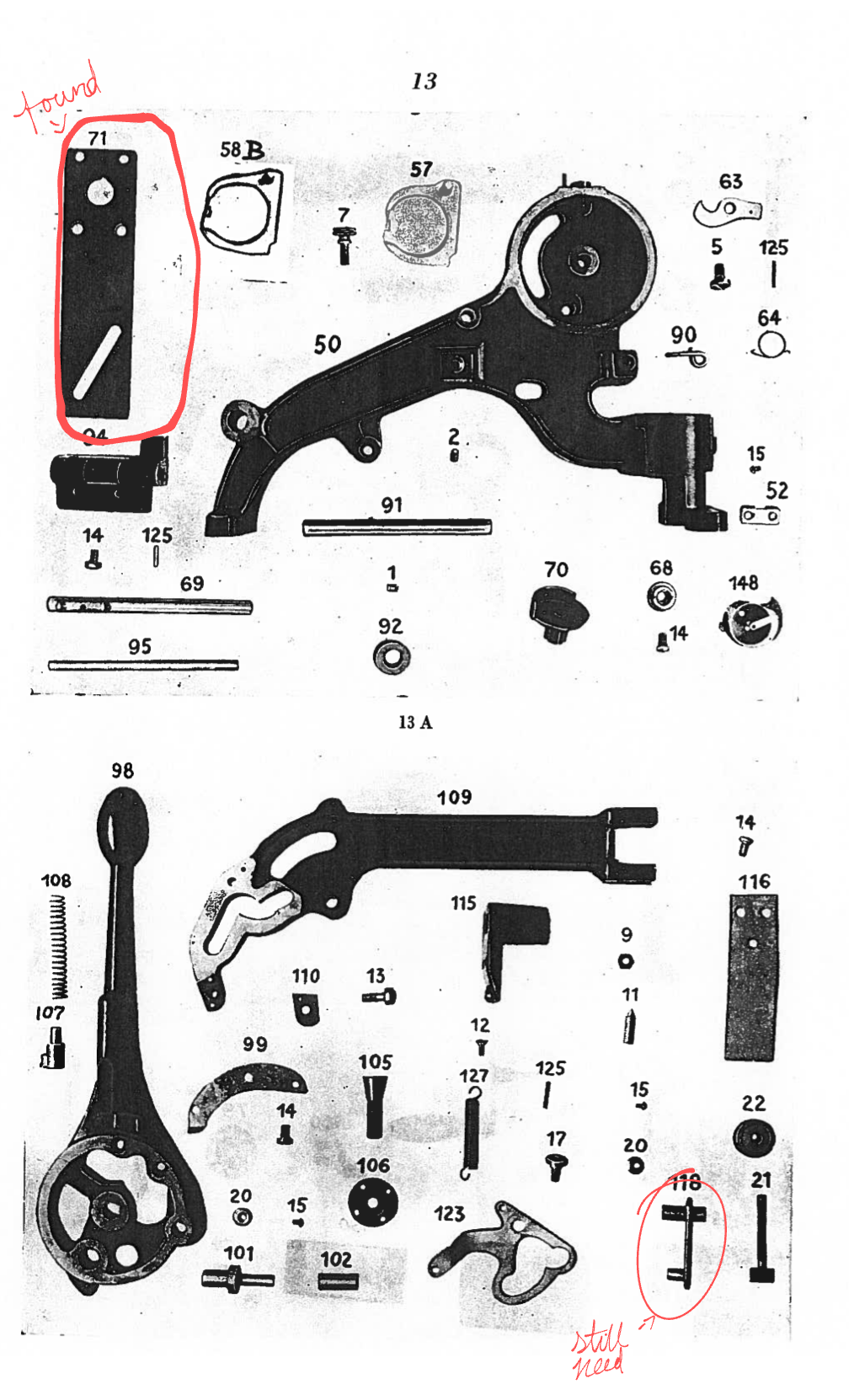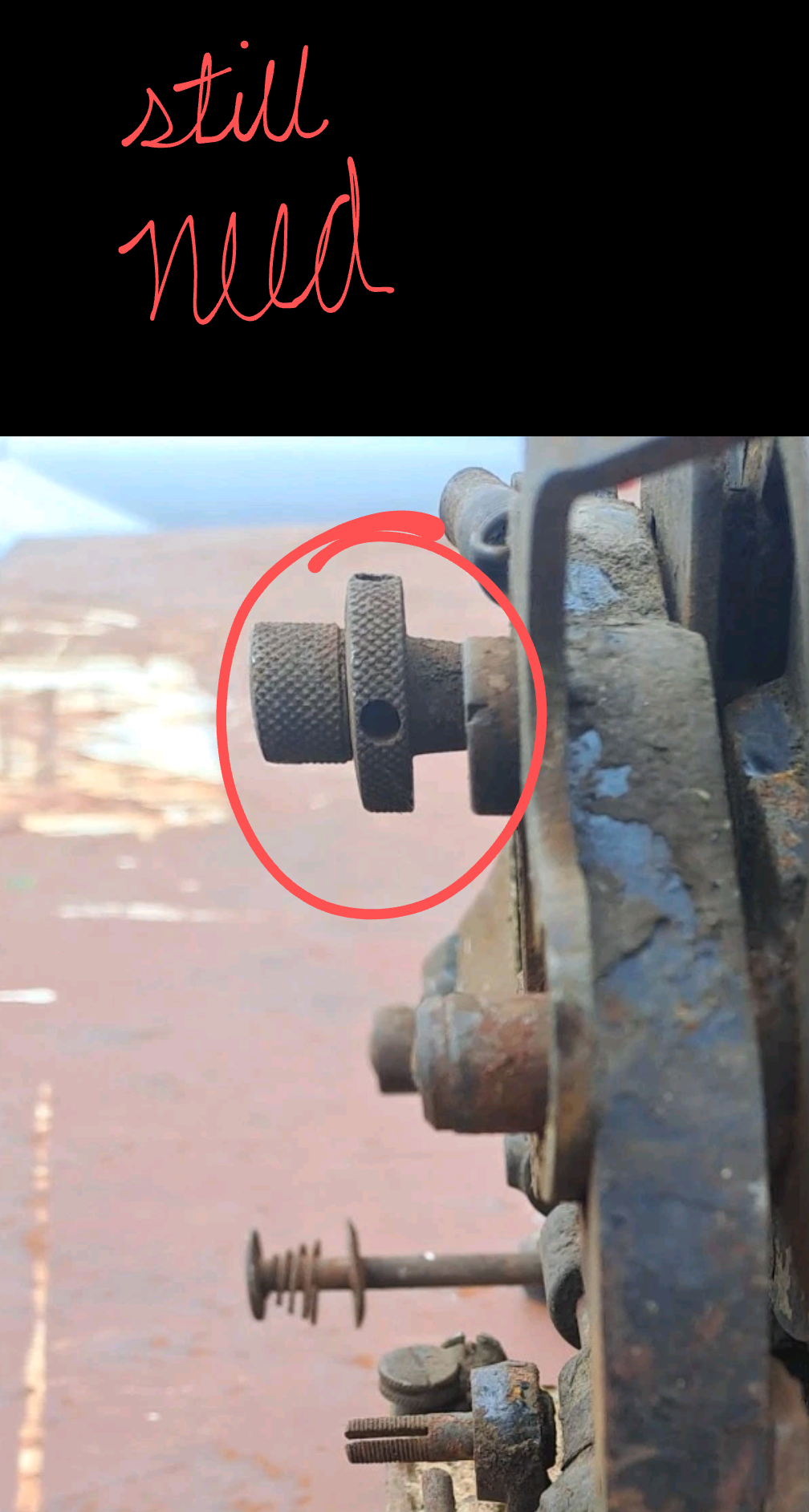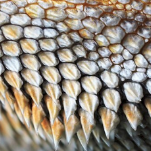All Activity
- Past hour
-
Hello! I've been a reader here for years and seeing other people's machine problems and the comments from other forum members suggesting fixes has helped me many a time. This week I've experienced a machine problem of my own, and for the first time I can't find anybody who's had the same issue, so I'm posting this with hopes that someone wiser than myself might be able to help me out. I've been sewing for nigh on 45 years now, but I'm still no machinery expert. I can figure out most little things (tension—it's always the tension!) but this one has me stumped. I've got a nice little Juki 5550N that I bought new (back when I could afford to buy things new!) I've had it about 9 or 10 years now I think, always sewing the same sort of stuff, but recently it's been acting up. I've noticed the occasional skipped stitch, and have noticed the thread momentarily going slack now and then. The past few days I've been tearing my hair out trying to diagnose the problem (and I lost my hair years ago, so that take some effort!) I'll list what I have tried at the end of this post, but right now I'll tell you what I've figured out. I think this issue is in the bobbin area, with possibly the thread catching on something or having trouble making it around the shuttle. It still sews and produces nice stitches most of the time, but there is definitely an issue. When I did a test sew just using the handwheel, I noticed that resistance is felt when the take-up lever is reaching its lowest position and just starting to move back upwards. If I continue to move the handwheel, two little pops are heard, as if the thread is catching somewhere and being released. As I mentioned earlier, when sewing with this issue, I've started to see the occasional skipped stitch, sometimes two in a row, and occasionally the thread will momentarily go slack between the take-up lever and the needle, justjsut for a moment. Then it gets tension again. I've made some videos showing the behaviour while handwheeling. I'll link those at the end of this post. Here's what I have tried: I've changed the needle for a new one. I've changed the size of the needle (even though I've been sewing with that size and that type of thread for years with no problem.) I've tried different cones of thread. I've changed the bobbin. I've tried a different bobbin case. I made certain the needle was inserted correctly. I've rethreaded the machine. I've disassembled the upper tension assembly to make sure it wasn't clogged with lint, and carefully reassembled it. I've adjusted the tension to make sure it is correct, and it does form nicely balanced stitches. I've taken off the needle plate and feed dogs and cleaned the bobbin area. I've oiled the machine. I've checked to make sure there are no foreign objects clogging the bobbin area (and there are none I can see.) That's about the extent of my machine knowledge, and now I'm stymied and frustrated. On to the videos! I tried to shoot from a few different angles to give y'all the best views possible. I'm handwheeling slowly so you can hear the pops hopefully. They're happening just as the take-up lever reaches the bottom and starts back up, and I've tried to show both the bobbin area and the take-up area so you can see how they correspond, and have also done a closeup of the bobbin area. Test sewing on scrap fabric: https://youtube.com/shorts/CofAeMaxJ8A?feature=share Needle plate removed, shot from left: https://youtube.com/shorts/794Q-e1iLlw?feature=share Needle plate removed, shot from right: https://youtube.com/shorts/pplD9J6i8Zo?feature=share Needle plate removed, closeup from front: https://youtu.be/9bncMsKGbBE Any suggestions would be SO appreciated. I'm at my wit's end and haven't gotten anything done for a week or more. Between that and the floods, it hasn't been the best of times here in NC! Thanks so much.
-
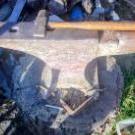
Custom speed reducer pulley for Singer 51W56
Calidora replied to FDC's topic in Leather Sewing Machines
Wow yours look way better than mine. They are amazing machines. Now that I have mine up and running it makes working on things much easier. I find that post beds are some of the most versatile machine out there. I don't have too much experience with several others but I've used a cylinder bed and flat and I like my post bed much better. - Today
-

Custom speed reducer pulley for Singer 51W56
friquant replied to FDC's topic in Leather Sewing Machines
Can you post links to the pieces one would need to buy in order to build this setup? I'm interested -

Custom speed reducer pulley for Singer 51W56
friquant replied to FDC's topic in Leather Sewing Machines
Yes I mean the pulley on the servo motor. They are typically 75mm. If it has a 15mm cylindrical shaft, that pulley can be replaced with a 45mm pulley for about ten dollars, which will slow down the machine. - Yesterday
-
Just wanted to share an update about Standard Rivet Company's inventory. Many of there classic lines including spots, crystals, conchos, rings and other leather embellishments are now at Bling in the Ring at https://www.blinginthering.com/ If you would like to know more about the closing of Standard Rivet Company and its impact on the leather industry you can read it here: https://blinginthering.com/blogs/news/what-happened-to-the-standard-rivet-company Hope this is helpful to others who've been looking for those products!
-
Nice job! I like the blue zipper!
-
I've taken a shot at dopp bags a couple of times but they never come out worth a damn especially if I try to do the lining. Wish mine came out half that good...I should also mention that mine are hand sewn so maybe that's a reason too, idk...
-
Custom speed reducer pulley for Singer 51W56
GerryR replied to FDC's topic in Leather Sewing Machines
I realize that you already have the DC servo drive, but for future projects, you should consider an AC system with a variable frequency drive (VFD) and a 3 phase inverter rated gearmotor. As an example of the control you would have, a 3 ph, 3/8 HP, 5:1 gearmotor can be operated from 10-90 Hz giving an output shaft speed of 35-459 rpm. Any speed running with less than 60 Hz is in constant torque mode, and greater than 60 hz is in constant horsepower mode. The speed is controlled by a variable pot, not a link to an optical control and is easily top-speed adjustable, giving full range of the pot for control to the selected top speed. The VFDs are relatively inexpensive, but the motors are a little pricey depending on your source, but for control, I think they are better than DC systems. JMO, YMMV. P.S. Beautiful job on that machine!! -
Too funny, Chuck! I've never played RP games, though being a fan of fantasy literature, I know a bit about them. You are definitely the first person to ask a question like this on these boards though I do remember threads about people making leather dice cups for playing these games!
-
If you have a hand plane, sharpen up the blade and try to skim it off. I've planed HDPE slides for tablesaw sleds before ... planes cut it like butter. Oh (edit): If you havent had experience flattening things with a plane, work from left to right or something, you can dish your project pretty easily if you aren't careful. I use a big straightedge to make sure that I'm not dishing things.
-
After finishing a Singer post bed restoration I wanted to make a Dopp kit bag. I bumbled around on-line and took ideas from a few places but took the time to make my own pattern. First attempt never saw the light of day, second attempt suggested a partially glued in lining instead of floating fabric. So this one has a marine vinyl interior to make cleaning up my exploded toothpaste/shampoo/ shaving cream mishaps easier. Naturally I sewed the loop in upside down with the raw edge up...4.0 required!
-
I'm not sure what you mean by motor pulley, are you referring to the pulley on the servo motor? If so its stock, 45 or 50 mm I think.
-
Those are called "levelling casters" and I bought them from an outfit in Chicago many years ago. They come in several sizes, always go as big as you can is my advice. I just checked and Amazon carries them so they are a day away if your use Amazon!
-
Thank you for the help! If I were to use the binding around the edge, would waxed canvas make a good lining? I am concerned about adding too much weight, since I’d like to keep it pretty malleable. I don’t have a lot of leather to work with (as far as different weights/colors), so trying to find a thinner leather to line inside out is difficult, but not impossible.
-
Thanks for the nice comment. Glad to be able to inspire a bit. The only thing I would like to have done a bit differently is that I would have liked the leather to be a bit thinner. It really is a hefty belt. But it was the thickness of leather that I just had brought with me, so I guess I'll just have to wear it till it softens. Brgds Jonas
-
@TonyV Thanks, I really missed my stitching horse, so I had to go about it by stabbing all the holes first, which is also doable, but I prefer to do it the other way :-) I have started wearing it, and so far I have avoided it getting too dirty Brgds Jonas
-
@JDFred Thanks for the nice comment :-) Brgds Jonas
-
Looks great! I always wanted to make my leather belt. Thank you for the inspiration!
-

DnD related question
chuck123wapati replied to UnderTheRedMoon's topic in All About Us and Off Topic
The bull, of course belongs to a miserly evil dwarf king and is guarded by six fully armored dwarves, three whom are archers of highest rank, two berserker dwarves and a maji dwarf. -
Agree on the planer for thickness reduction as the best option. but those places with the capacity for 2 feet wide seem to be getting fewer all the time in some areas. I have successfully resurfaced mine by hand. I did light pressure with a fairly coarse paper on a palm sander to take down the high spots. I think I started in the low 100s for grit. You want to almost float it over the surface. The paper cleans easy enough with a crepe belt cleaner every so often, no different than wood as long as it doesn't melt.. Then follow up with a couple progression of finer grits until you are satisfied. The key is keep moving with light pressure. Excess pressure or staying in one spot can melt the plastic and that gums up the paper and makes a divot. You don't have to take out the cut lines as much as just take down the high ridges next to those cut lines. A belt sander is probably going to run too fast and "hot".
-
Most of those are pretty valid and on the money points. I got into leatherworking mainly as you said I felt like it was an easy money maker and I wanted a few things. There was a learning curve, but a holster isn't the RD-180. I'd say the learning curve for myself was about a week of full time experimenting and some fine tune skill honing over a year or so. I think the big mistake that newcomers make is that they want to make "Custom" holsters, one customer at a time. There's no money in that. Maybe pocket money, but it's allot of frustration and annoyance and it's almost impossible to read someone else's mind 100%. The customer ends up never being fully happy. There are some pretty successful custom makers out there, but they're a rarity and a good few of them live on some kind of backup income like SS, Army Pension/VA Disability, Oil Royalties, etc. My approach was to make a few lines of holsters that were inspired by big name makers or of my own design and look for retailers who would sell them under their name. If they sold they sold, if not, not. Cheap models always sold the best, about 10x better.
-

DnD related question
chuck123wapati replied to UnderTheRedMoon's topic in All About Us and Off Topic
The ring from a bull's nose.




